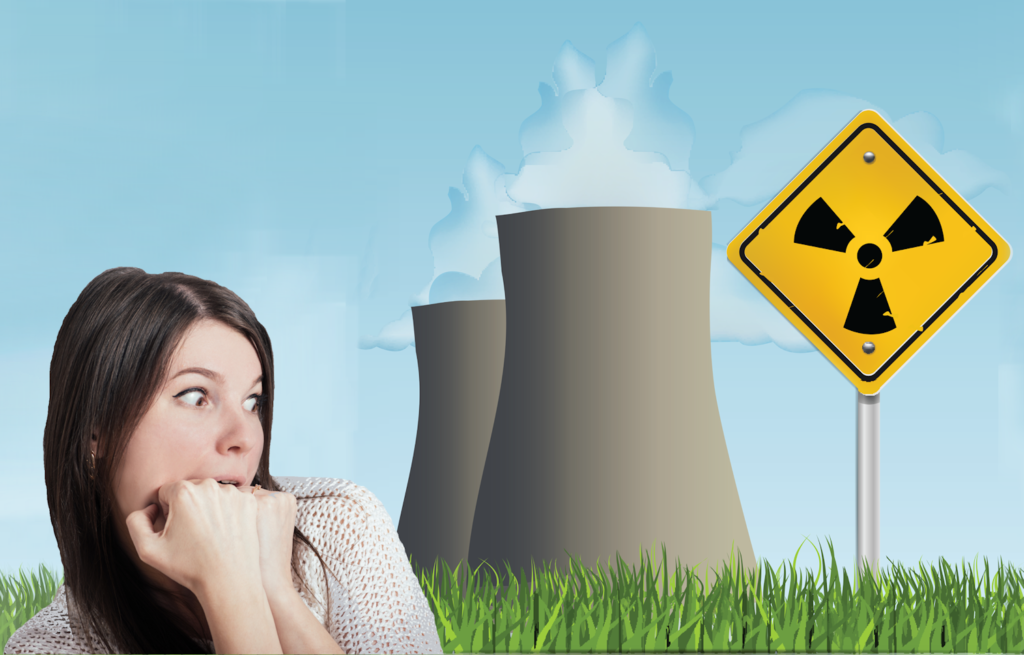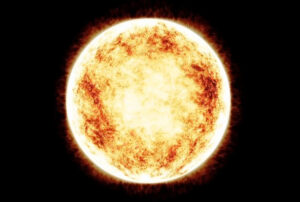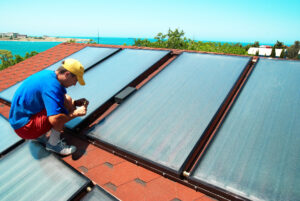No economy or business in the world can be successful without a reliable source of electricity. One of the consequences of the Russian invasion of Ukraine — and the subsequent sanctions against Russia — has been an unsettled energy situation in Europe. This challenge comes at a time when the negative effects of climate change are increasingly evident and the urgency to do something has never been more important. These simultaneous challenges have motivated some governments to reassess the value of nuclear power. For example, in the United States, “California Gov. Gavin Newsom and a group of legislators reached a last-minute compromise to extend the lifespan of the state’s last operating nuclear plant by up to five years. But the proposal faces an uncertain future as the Legislature concludes its two-year session this week.”[1] And, “the Biden administration has established a $6 billion fund to help troubled nuclear plant operators keep their reactors running and make them more economically competitive against cheaper resources like solar and wind power.”[2]
And, in a hotly debated decision, Germany has decided to “keep two of its three remaining nuclear power plants operational as an emergency reserve for its electricity supply, … delaying the country’s plans to become the first industrial power to go nuclear-free for its energy.”[3] Nuclear plants account for approximately 6% of the country’s electrical output. The Wall Street Journal reports, “[Japan’s] Prime Minister Fumio Kishida [has] unveiled plans to return nuclear energy to a central place in the country’s electric grid. Tokyo will aim to bring seven reactors back into service, for a total of 17, and will invest in developing and installing next-generation reactors. Nuclear plants generated about a third of the country’s electricity 20 years ago, according to the International Atomic Energy Agency, but that has fallen to 7.2%. Most of the country’s 33 operational reactors have been offline for years undergoing safety checks.”[4]
Journalists Liz Alderman (@LizAldermanNYT) and Stanley Reed (@stanleyreed12) report, “Poland wants a fleet of smaller nuclear power stations to help end its reliance on coal. Britain is betting on Rolls-Royce to produce cheap modular reactors to complement wind and solar energy. And in France, President Emmanuel Macron plans to build on the nation’s huge nuclear program.”[5] They add, “More than half a dozen European countries recently announced plans to build a new generation of nuclear reactors.” Nuclear power plants are also being built or in use in other Middle East and Asian countries, including China. The Associated Press reports, “A survey of the energy policies in all 50 states and the District of Columbia found that a strong majority — about two-thirds — say nuclear, in one fashion or another, will help take the place of fossil fuels. The momentum building behind nuclear power could lead to the first expansion of nuclear reactor construction in the U.S. in more than three decades.”[6] All this activity begs the question: Will the Nuclear Power Sector Make a Resurgence?
Fear, Waste, and Cost
If a resurgence is going to take place, the nuclear industry will have to tackle the challenges that put governments off of nuclear power in the first place. The three primary reasons many countries soured on nuclear power were fear, waste, and cost. Those concerns are genuine and they remain challenges that need addressing.
Fear. When the topic of nuclear power generation is raised, three crises — Three Mile Island, Chernobyl, and Fukushima — generally enter the conversation. Journalists Julia Horowitz (@juliakhorowitz), Salma Abdelaziz (@SalmaCNN), and Li-Lian Ahlskog Hou (@liahlskog) explain, “Memories of accidents at Fukushima, Chernobyl and Three Mile Island still loom large, fueling skepticism and fear and deterring investors from funding new projects.”[7] Author Michael Shellenberger (@ShellenbergerMD) adds, “The accidents proved the relative safety, not relative danger, of nuclear energy. Nobody died from radiation at Three Mile Island or Fukushima, and fewer than 50 died from Chernobyl in the 30 years since the accident. How, then, did everyone come to see those nuclear accidents as so catastrophic? The answer is because of how governments responded to them. Instead of encouraging the public to stay calm and carry on, governments freaked out, and evacuated hundreds of thousands of people.”[8] Despite the lack of deaths, few people would deny that those events were catastrophic as a result of their clean-up costs and long-term effects.
Nevertheless, Shellenberger is correct about the safety record of nuclear power plants. The Economist explains, “Even when accounting for the high-profile disasters, nuclear power is very safe. … A terawatt-hour (TWh) of electricity from nuclear energy is associated with 0.03 deaths (including indirect deaths from disasters and workplace accidents at the plants). That makes it even safer than wind energy, which is associated with 0.04 deaths per TWh, mostly from accidents during the installation process, drownings on offshore sites and helicopter collisions with turbines. Only solar energy is less deadly than nuclear. Coal is the deadliest because of the air pollution it causes: one TWh is linked to 24.6 deaths.”[9] Despite the data, I suspect some people will always fear that nuclear power plants could become weaponized — or become embroiled in warfare as in Ukraine — and release radiation. Another fear involves the transport and storage of nuclear waste. A topic to which we next turn.
Nuclear Waste. Alderman and Reed note, “Germany is at the head of a group of nations that want to defuse efforts to include more nuclear power in Europe’s green energy mix. They are worried about a proliferation of nuclear plants on European soil, and the radioactive waste they produce.” Dealing with nuclear waste is a challenge. The website whatisnuclear.com explains, “Nuclear waste is made of radioactive atoms generated after large atoms split. Nuclear reactors make nuclear waste during operation. The physics leverage of E=MC² makes nuclear waste uniquely concentrated; it’s both extraordinarily small and seriously hazardous. The relatively tiny amount of waste is intriguing in that its overall environmental, health, and land footprint can be minimal. But, there is legitimate concern that the hazards may be difficult to contain.”[10] The site adds, “The nuclear waste question fundamentally asks whether or not humanity can prevent this radioactive material from causing harm to people and the environment.”
Journalist Mitch Jacoby reports, “More than a quarter million metric tons of highly radioactive waste sits in storage near nuclear power plants and weapons production facilities worldwide, with over 90,000 metric tons in the US alone.”[11] More concerning, he reports, “The waste, much of it decades old, awaits permanent disposal in geological repositories, but none are operational. With nowhere to go for now, the hazardous materials and their containers continue to age. That unsustainable situation is driving corrosion experts to better understand how steel, glass, and other materials proposed for long-term nuclear waste storage containers might degrade.”
Cost. Excessive costs associated with nuclear power plants are primarily attached to their construction. Journalist Brad Plumer (@bradplumer) explains, “More than safety or waste issues, cost is nuclear’s Achilles’ heel. Modern-day reactors have become jarringly expensive to build, going for $5 billion to $10 billion a pop. Worse, the price tag seems to be rising in many places.”[12] According to Plumer, the cost story isn’t all bad. He writes, “Nuclear construction costs in the US did spiral out of control, especially after the Three Mile Island meltdown in 1979. But this wasn’t universal. Countries like France, Japan, and Canada kept costs fairly stable during this period. And South Korea actually drove nuclear costs down, at a rate similar to what you see for solar. Studying these countries can offer lessons for how to make nuclear cheaper — so that it can become a useful clean energy resource around the world.”
Concluding Thoughts
The Economist concludes, “Nuclear energy has had an image problem for some time.” Some of the ways the industry is trying to overcome this image problem is through technological advancements and public education. In Part Two of this article, I will discuss how the emergence of smaller nuclear power plants is advancing the field; and, in Part Three, I will discuss the arguments being made about how nuclear power generation can support climate change goals. Shellenberger is not sure “whether or not fears of air pollution and global warming can ever trump fears of nuclear accidents”; however, the world’s climate future may depend on it.
Footnotes
[1] Michael R. Blood, “Governor, lawmakers debate longer run for California nukes,” The Sacramento Bee, 30 August 2022.
[2] Ivan Penn, “Nuclear Power Gets New Push in U.S., Winning Converts,” The New York Times, 5 July 2022.
[3] Erika Solomon and Melissa Eddy, “Breaking Taboo, Germany Extends Life of 2 Nuclear Reactors,” The New York Times, 5 September 2022.
[4] Editorial Board, “Japan Revives Nuclear Power,” The Wall Street Journal, 25 August 2022.
[5] Liz Alderman and Stanley Reed, “Europe Revisits Nuclear Power as Climate Deadlines Loom,” The New York Times, 29 November 2021.
[6] The Associated Press, “The U.S. is divided over whether nuclear power is part of the green energy future,” NPR, 18 January 2022.
[7] Julia Horowitz, Salma Abdelaziz, and Li-Lian Ahlskog Hou, “Nuclear energy scares people. The climate crisis is giving it another chance,” CNN, 27 December 2021.
[8] Michael Shellenberger, “If Nuclear Power Is So Safe, Why Are We So Afraid Of It?” Forbes, 11 June 2018.
[9] Staff, “How safe is nuclear energy?” The Economist, 19 July 2022.
[10] Staff, “Nuclear waste,” whatisnuclear.com.
[11] Mitch Jacoby, “As nuclear waste piles up, scientists seek the best long-term storage solutions,” Chemical & Engineering News, 30 March 2020.
[12] Brad Plumer, “Why America abandoned nuclear power (and what we can learn from South Korea),” Vox, 29 February 2016.





